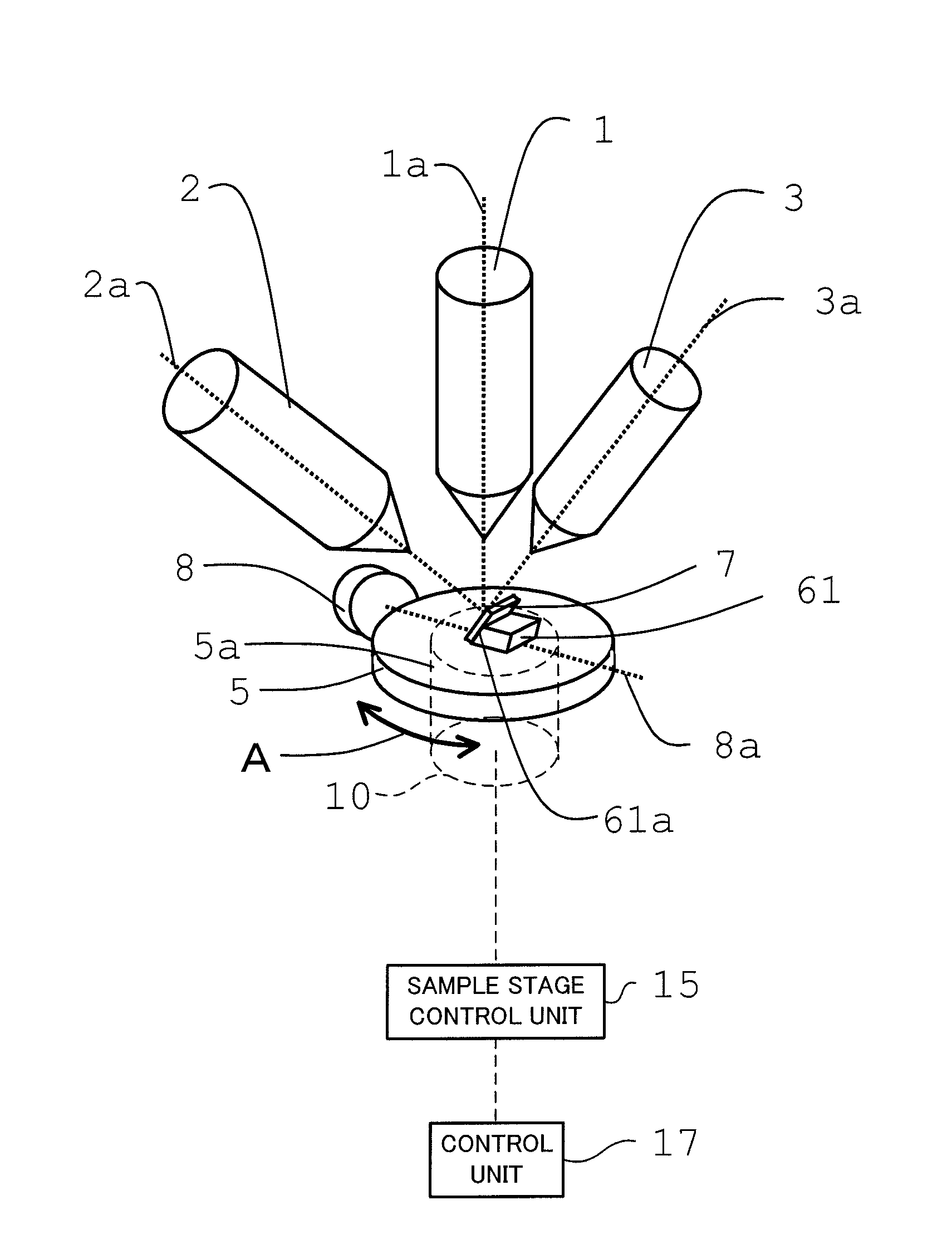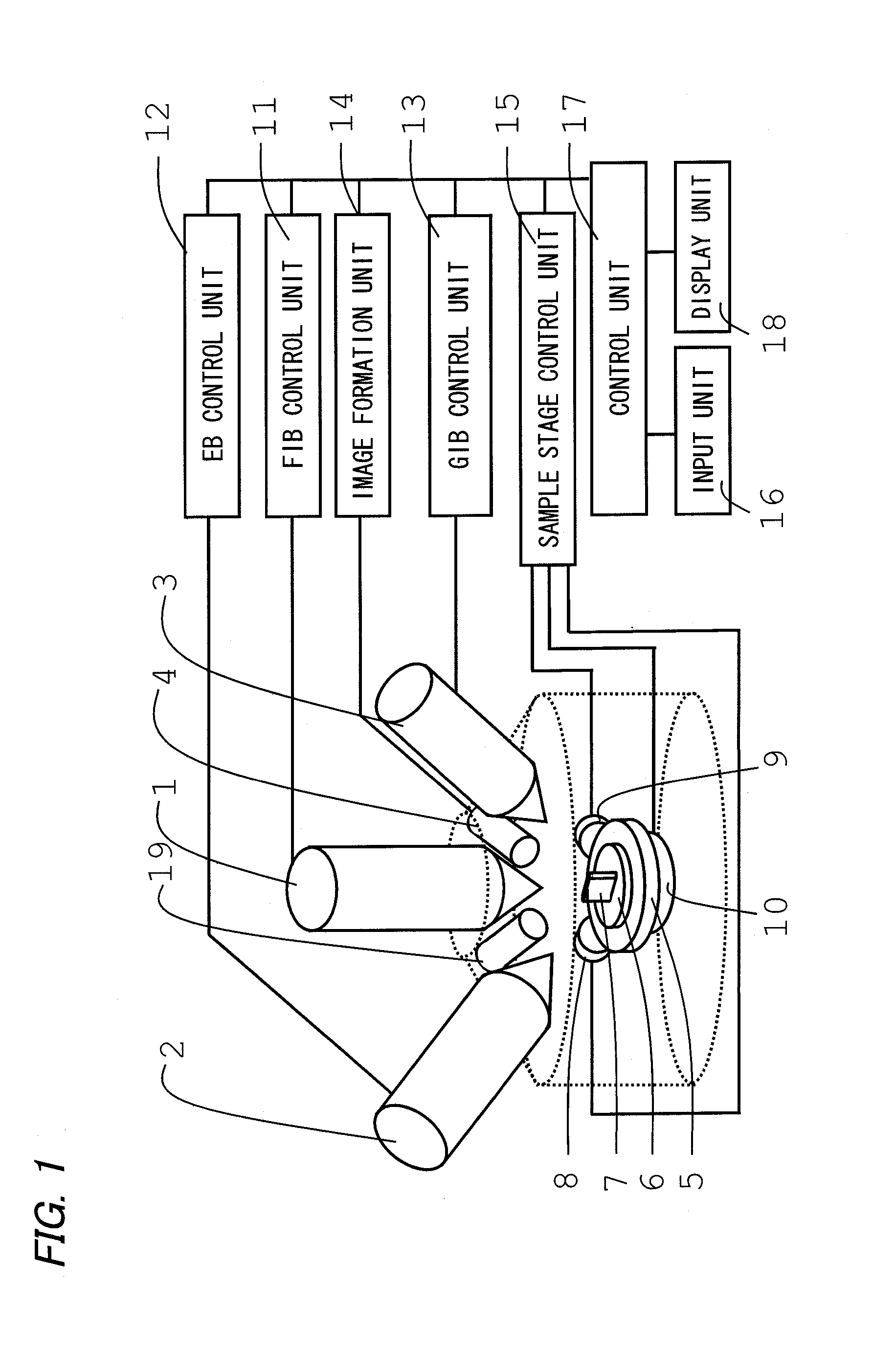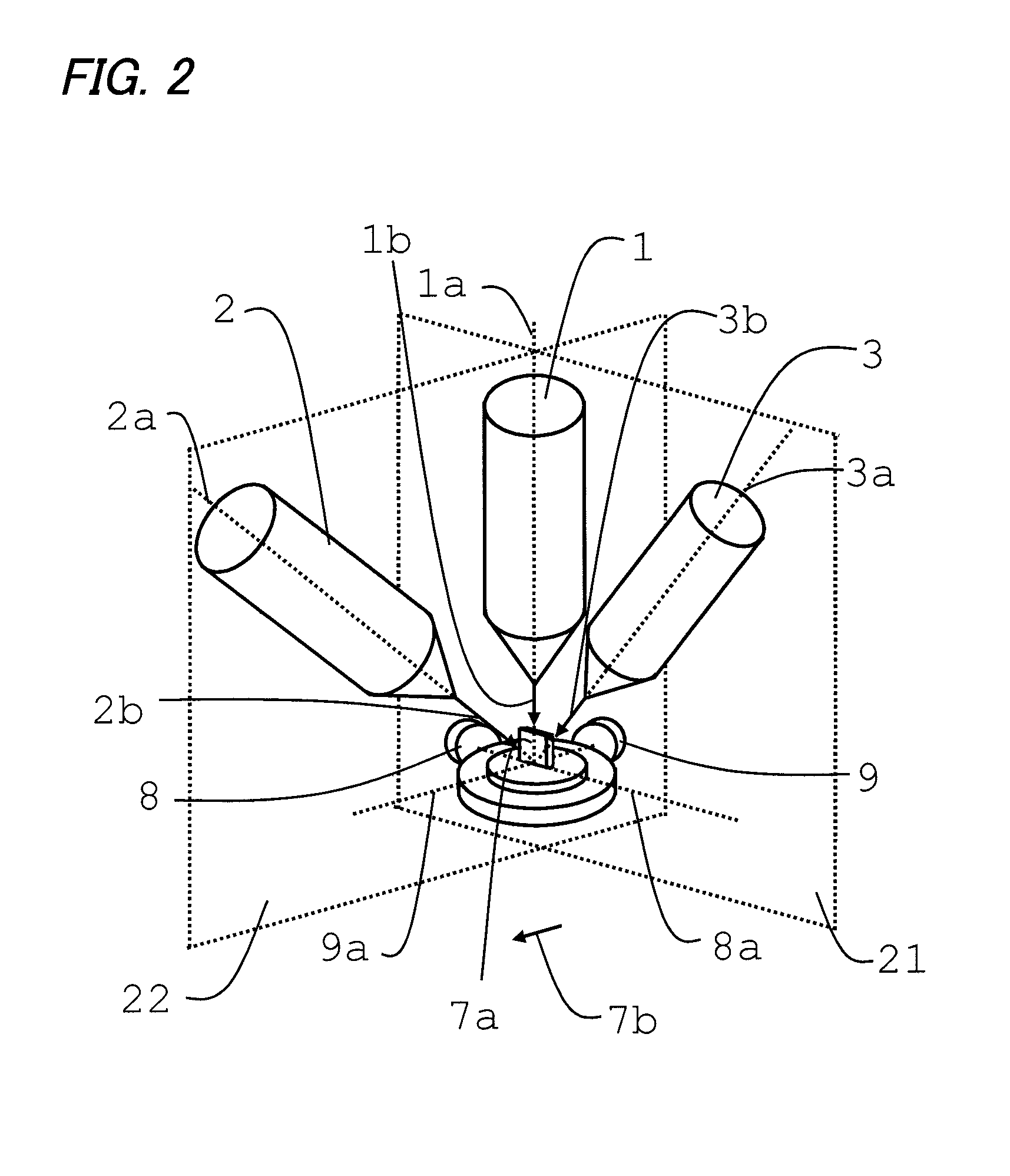Composite charged particle beam apparatus and thin sample processing method
a technology of charged particles and beam apparatus, applied in the direction of electrical apparatus, basic electric elements, electric discharge tubes, etc., can solve problems affecting observation, and achieve the effect of reducing streaks
- Summary
- Abstract
- Description
- Claims
- Application Information
AI Technical Summary
Benefits of technology
Problems solved by technology
Method used
Image
Examples
first exemplary embodiment
[0056]An exemplary embodiment will be described in which the thin sample 7 is processed by using the composite charged particle beam apparatus provided with the above-described second tilt mechanism.
[0057]Referring to FIGS. 4A to 4D, a processing method will be described in which an azimuth angle of the GIB 3b is changed by tilting the sample stage 5 about the second tilt axis 9a. FIG. 4A illustrates arrangement of each column and the sample stage 5 on the second plane 22. FIG. 4B illustrates the arrangement of each column and the sample stage 5 on the first plane 21 at this time.
[0058]First, the cross-sectional surface 7a is formed on the thin sample 7 by using the FIB 1b. Then, the thin sample 7 is arranged so as to enable the cross-sectional surface 7a to be irradiated with the EB 2b. Then, the cross-sectional surface 7a is irradiated with the GIB 3b, and is subjected to the etching processing (first finishing processing). The cross-sectional surface 7a is irradiated with the EB ...
second exemplary embodiment
[0066]An exemplary embodiment will be described in which the thin sample 7 is processed by using the composite charged particle beam apparatus provided with a tilt sample holder 61 instead of the above-described second tilt mechanism.
[0067]In the composite charged particle beam apparatus without the second tilt mechanism, it is not possible to change the azimuth angle of the GIB 3b which is incident on the upper surface 7c of the thin sample 7, only by tilting the thin sample 7 about the first tilt axis 8a. Therefore, it is adopted a configuration where a sample fixing surface 61a is provided which is tilted at a constant angle with respect to a sample installation surface 5a of the sample stage 5, the attachable and detachable tilt sample holder 61 is installed, and the sample stage 5 is tilted about the first tilt axis 8a in a state where the thin sample 7 is fixed to the tilt sample holder 61. In this manner, it is possible to perform the finishing processing by irradiating the c...
third exemplary embodiment
[0074]Additional exemplary embodiment in which the thin sample 7 is processed by using the composite charged particle beam apparatus provided with the tilt sample holder 61 like the second exemplary embodiment will be described. In the present exemplary embodiment, the tilt sample holder 61 is used similarly to the second exemplary embodiment, but a rotary operation (rotation operation) is added in which the sample stage drive unit 10 (refer to FIG. 1) rotates the thin sample 7 in a plane during the processing.
[0075]FIGS. 10A and 10B are explanatory views for defining an “incidence angle” and an “azimuth angle” which are applied to the present exemplary embodiment. FIG. 10A illustrates the incidence angle, which is an angle in which the GIB 3b is incident on the thin sample 7. Specifically, the incidence angle herein is an angle in a direction perpendicular to the exposed cross-sectional surface 7a of the thin sample 7.
[0076]On the other hand, FIG. 10B illustrates the “azimuth angle...
PUM
 Login to View More
Login to View More Abstract
Description
Claims
Application Information
 Login to View More
Login to View More - R&D
- Intellectual Property
- Life Sciences
- Materials
- Tech Scout
- Unparalleled Data Quality
- Higher Quality Content
- 60% Fewer Hallucinations
Browse by: Latest US Patents, China's latest patents, Technical Efficacy Thesaurus, Application Domain, Technology Topic, Popular Technical Reports.
© 2025 PatSnap. All rights reserved.Legal|Privacy policy|Modern Slavery Act Transparency Statement|Sitemap|About US| Contact US: help@patsnap.com



